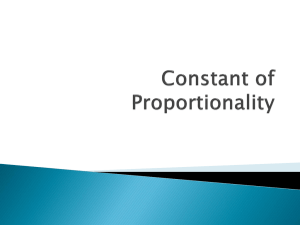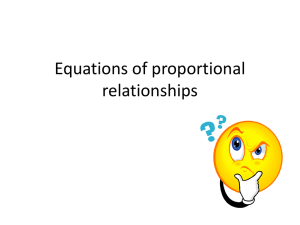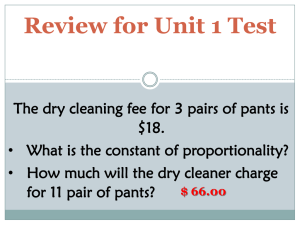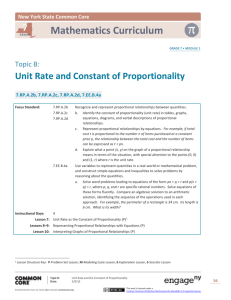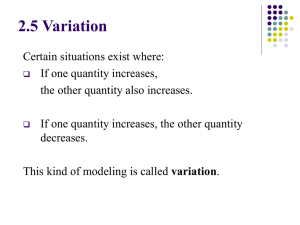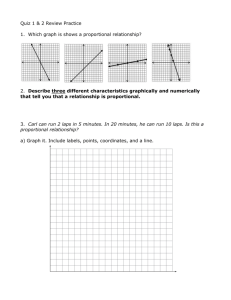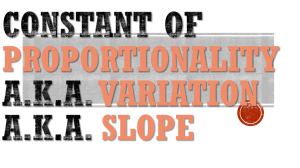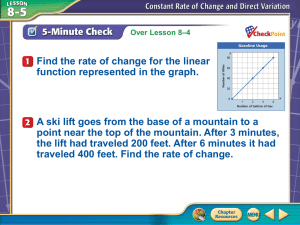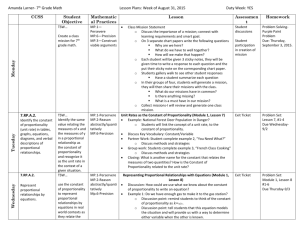Differential Equations
advertisement
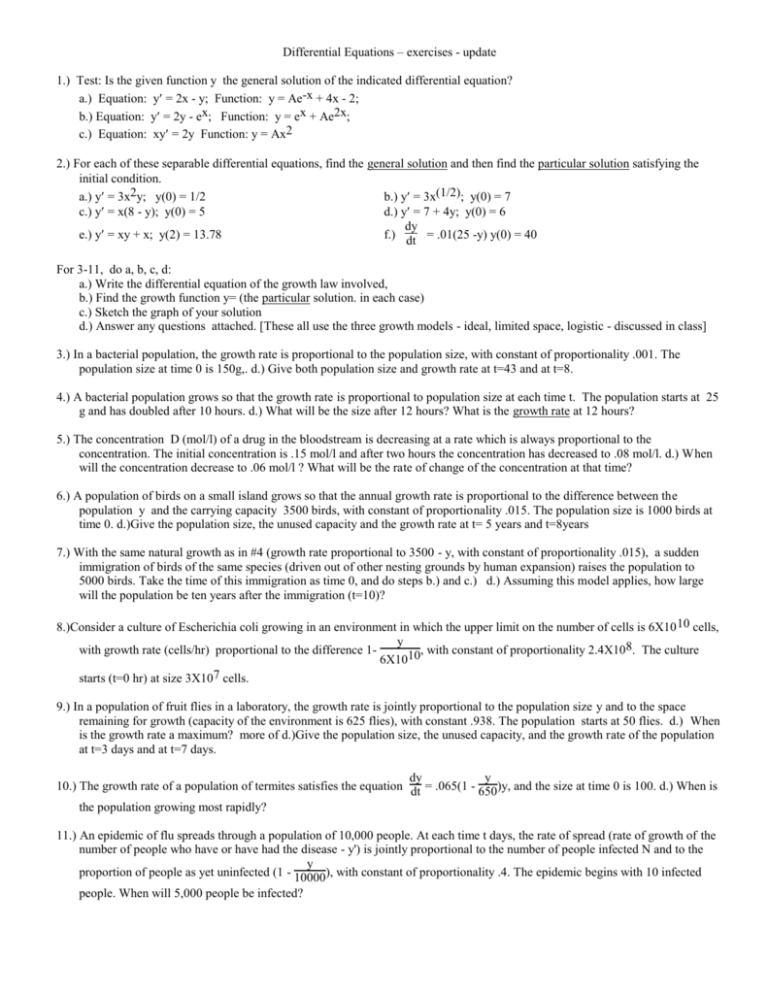
Differential Equations – exercises - update 1.) Test: Is the given function y the general solution of the indicated differential equation? a.) Equation: y = 2x - y; Function: y = Ae-x + 4x - 2; b.) Equation: y = 2y - ex; Function: y = ex + Ae2x; c.) Equation: xy = 2y Function: y = Ax2 2.) For each of these separable differential equations, find the general solution and then find the particular solution satisfying the initial condition. a.) y = 3x2y; y(0) = 1/2 b.) y = 3x(1/2); y(0) = 7 c.) y = x(8 - y); y(0) = 5 d.) y = 7 + 4y; y(0) = 6 dy e.) y = xy + x; y(2) = 13.78 f.) dt = .01(25 -y) y(0) = 40 For 3-11, do a, b, c, d: a.) Write the differential equation of the growth law involved, b.) Find the growth function y= (the particular solution. in each case) c.) Sketch the graph of your solution d.) Answer any questions attached. [These all use the three growth models - ideal, limited space, logistic - discussed in class] 3.) In a bacterial population, the growth rate is proportional to the population size, with constant of proportionality .001. The population size at time 0 is 150g,. d.) Give both population size and growth rate at t=43 and at t=8. 4.) A bacterial population grows so that the growth rate is proportional to population size at each time t. The population starts at 25 g and has doubled after 10 hours. d.) What will be the size after 12 hours? What is the growth rate at 12 hours? 5.) The concentration D (mol/l) of a drug in the bloodstream is decreasing at a rate which is always proportional to the concentration. The initial concentration is .15 mol/l and after two hours the concentration has decreased to .08 mol/l. d.) When will the concentration decrease to .06 mol/l ? What will be the rate of change of the concentration at that time? 6.) A population of birds on a small island grows so that the annual growth rate is proportional to the difference between the population y and the carrying capacity 3500 birds, with constant of proportionality .015. The population size is 1000 birds at time 0. d.)Give the population size, the unused capacity and the growth rate at t= 5 years and t=8years 7.) With the same natural growth as in #4 (growth rate proportional to 3500 - y, with constant of proportionality .015), a sudden immigration of birds of the same species (driven out of other nesting grounds by human expansion) raises the population to 5000 birds. Take the time of this immigration as time 0, and do steps b.) and c.) d.) Assuming this model applies, how large will the population be ten years after the immigration (t=10)? 8.)Consider a culture of Escherichia coli growing in an environment in which the upper limit on the number of cells is 6X10 10 cells, y with growth rate (cells/hr) proportional to the difference 1, with constant of proportionality 2.4X108. The culture 6X1010 starts (t=0 hr) at size 3X107 cells. 9.) In a population of fruit flies in a laboratory, the growth rate is jointly proportional to the population size y and to the space remaining for growth (capacity of the environment is 625 flies), with constant .938. The population starts at 50 flies. d.) When is the growth rate a maximum? more of d.)Give the population size, the unused capacity, and the growth rate of the population at t=3 days and at t=7 days. dy y 10.) The growth rate of a population of termites satisfies the equation dt = .065(1 - 650)y, and the size at time 0 is 100. d.) When is the population growing most rapidly? 11.) An epidemic of flu spreads through a population of 10,000 people. At each time t days, the rate of spread (rate of growth of the number of people who have or have had the disease - y') is jointly proportional to the number of people infected N and to the y proportion of people as yet uninfected (1 - 10000), with constant of proportionality .4. The epidemic begins with 10 infected people. When will 5,000 people be infected?

